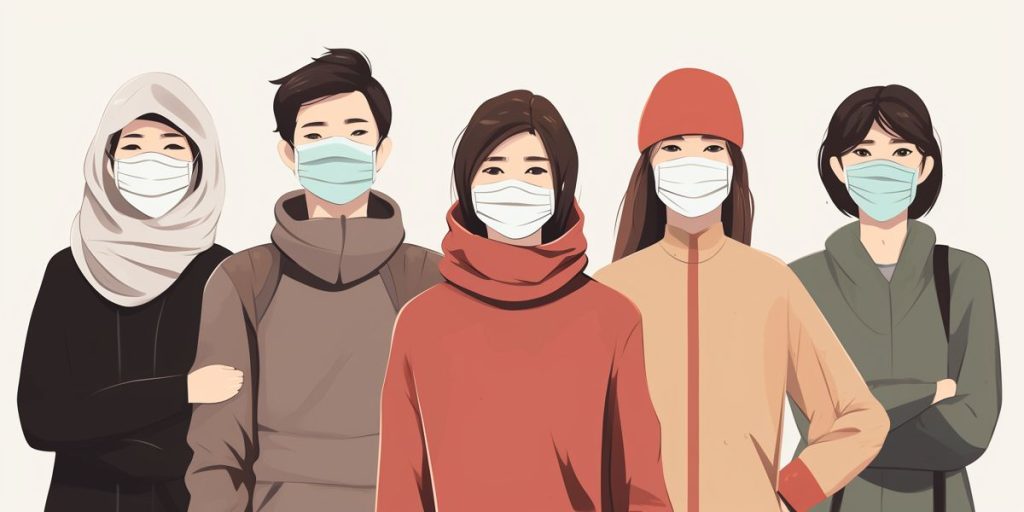Following the Diwali celebrations, three Indian cities have made it to the list of the world’s ten most polluted cities. New Delhi topped the list with an AQI of 407, while Mumbai and Kolkata ranked sixth and seventh respectively, with AQI levels of 157 and 154, highlighting the alarming deterioration of air quality due to the festivities.
What are the three Indian cities among the world’s ten most polluted after Diwali?
The three Indian cities among the world’s ten most polluted after Diwali are:
1. New Delhi, with an AQI of 407, topping the global ranking.
2. Mumbai, ranked sixth globally, with an AQI of 157.
3. Kolkata, taking the seventh spot with an AQI of 154.
These alarming levels of pollution are largely due to Diwali celebrations.
Diwali Celebrations Lead to Hazardous Air Quality Levels
In the aftermath of Diwali, a festival celebrated with great fervor across India, the air quality in several Indian cities plunged to alarming levels. The festivities, replete with firecrackers and lights, have resulted in a significant deterioration of air quality. New Delhi, India’s capital, once again found itself grappling with a hazardous atmosphere, recording an Air Quality Index (AQI) of 407. In the global ranking of polluted cities, this put New Delhi at the top.
Mumbai and Kolkata Join the List
Not far behind, Mumbai and Kolkata also featured among the world’s most polluted cities post-Diwali. With an AQI of 157, Mumbai claimed the sixth spot, while Kolkata was in the seventh position with an AQI of 154. These figures are alarming because an AQI level within the range of 150-200 can cause considerable discomfort to individuals with respiratory conditions, while levels above 400 pose a severe risk to all.
Smog Engulfs the Capital
The scenario in New Delhi was particularly grim, as a dense smog engulfed the city starting Sunday night. The AQI peaked at a shocking 680 just past midnight, highlighting the severe impact of the festivities on the city’s air quality. Despite annual bans on firecrackers intended to mitigate pollution, enforcement seems to be lackluster.
Authorities’ Response to the Crisis
In response to the burgeoning crisis, Saket Gokhale, a local lawmaker, sought accountability from the police through a letter posted on the platform X. He demanded details on the enforcement of the firecracker ban and the measures taken against violations. Meanwhile, the Delhi police’s silence on Reuters’ inquiries speaks volumes about the challenges in addressing the pollution.
A Recurring Winter Woe
It is a well-observed pattern that air quality in northern India takes a nosedive ahead of the winter season. Cold air traps the pollutants from a variety of sources including vehicles, industries, and the burning of agricultural waste. Although a brief shower brought temporary relief, the authorities decided to continue restrictions on vehicle use and construction activities to protect the residents from the health hazards of pollution and keep the schools closed.
Additional Reports and Services
Amid these environmental concerns, there are additional reports and services that the public should be aware of:
- Kremlin’s Reaction to Zelenskiy’s Alleged Ignorance: A recent statement on President Zelenskiy’s purported lack of knowledge regarding the Nord Stream attack has been described as ‘alarming’ by the Kremlin.
- Larnaca Biennale Reaches Final Week: The Larnaca Biennale, an event that showcases exceptional artworks, is in its final week and promises visitors an out-of-this-world experience.
- Emergency Services and Information: For immediate needs or inquiries, services such as Emergency & Medical, Utilities, Transport & Telecoms, and Citizens’ One Stop shops remain available.
Navigating the Challenges Ahead
As India faces the repercussions of its festival season on air quality, it is clear that more stringent measures and better enforcement are imperative. The battle for cleaner air is a complex one, involving not only regulations but also public awareness and cooperation.
- Three Indian cities (New Delhi, Mumbai, and Kolkata) have made it to the list of the world’s ten most polluted cities after Diwali.
- New Delhi tops the list with an AQI of 407, while Mumbai and Kolkata rank sixth and seventh respectively, with AQI levels of 157 and 154.
- Air quality in several Indian cities deteriorated significantly due to the festivities, replete with firecrackers and lights.
- New Delhi recorded an AQI of 407, making it the most polluted city globally.
- Mumbai ranked sixth with an AQI of 157, while Kolkata ranked seventh with an AQI of 154.
- An AQI level within the range of 150-200 can cause discomfort to individuals with respiratory conditions, while levels above 400 pose severe risks to all.
- New Delhi was engulfed in a dense smog, with the AQI peaking at 680, highlighting the severe impact of the festivities on air quality.
- Authorities are being questioned about the enforcement of the firecracker ban and measures taken against violations.
- Air quality deterioration is a recurring problem in northern India ahead of the winter season.
- Additional reports and services unrelated to the pollution crisis are also mentioned in the article.

